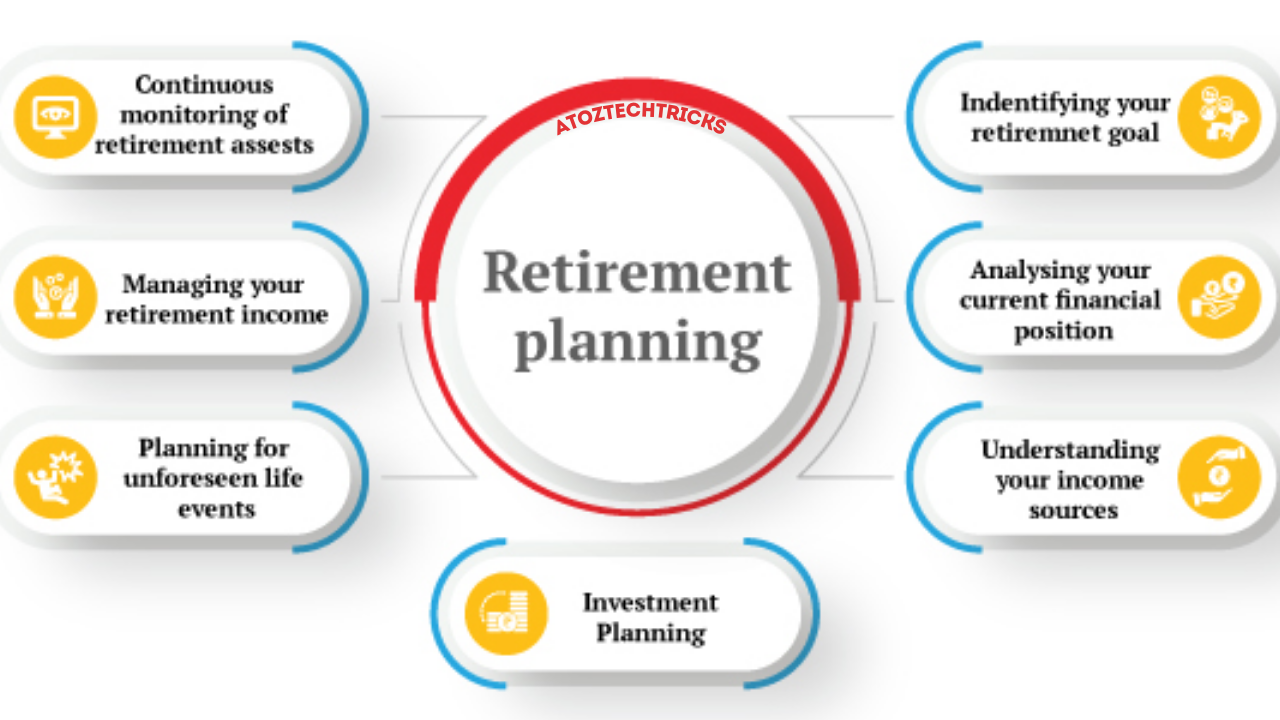Understanding Different Retirement Accounts: A Comprehensive Guide
Retirement planning is a crucial aspect of financial management, and choosing the right retirement accounts can significantly impact your financial future. With various options available, it’s essential to understand each type’s benefits, limitations, and how they fit into your overall retirement strategy. This guide will explore different retirement accounts, including their features, advantages, and tax implications, to help you make informed decisions about your retirement savings.
1. Introduction to Retirement Accounts
Retirement accounts are designed to help individuals save for their retirement years, offering various tax advantages and growth opportunities. These accounts come with different rules and benefits, making it important to understand how each one works to optimize your retirement savings strategy.
2. Traditional IRA
Overview
The Traditional Individual Retirement Account (IRA) is one of the most popular retirement savings vehicles. Contributions to a Traditional IRA may be tax-deductible, depending on your income and other factors.
Key Features
- Tax Deductibility: Contributions may be fully or partially tax-deductible, reducing your taxable income for the year in which you contribute.
- Tax-Deferred Growth: Investments grow tax-deferred until withdrawal.
- Contribution Limits: For 2024, the contribution limit is $6,500 per year, or $7,500 if you’re 50 or older.
- Withdrawal Rules: Withdrawals are taxed as ordinary income, and you must start taking required minimum distributions (RMDs) at age 73.
Advantages
- Immediate tax benefits through deductions.
- Tax-deferred growth on investments.
- Lower current taxable income.
Disadvantages
- Taxes owed upon withdrawal.
- RMDs can increase taxable income in retirement.
- Early withdrawal penalties before age 59½, with exceptions for specific situations.
3. Roth IRA

Overview
The Roth IRA offers a different approach to retirement savings by allowing tax-free withdrawals in retirement. Contributions are made with after-tax dollars.
Key Features
- Tax-Free Withdrawals: Qualified withdrawals are tax-free, including both contributions and earnings.
- No RMDs: Unlike Traditional IRAs, Roth IRAs do not have required minimum distributions during the account holder’s lifetime.
- Contribution Limits: The 2024 contribution limit is the same as the Traditional IRA: $6,500 per year, or $7,500 if you’re 50 or older.
- Income Limits: Contributions are phased out at higher income levels. For 2024, the phase-out range starts at $138,000 for single filers and $218,000 for married couples filing jointly.
Advantages
- Tax-free withdrawals in retirement.
- No RMDs, allowing your money to grow longer.
- Flexibility in withdrawing contributions (but not earnings) at any time without penalty.
Disadvantages
- Contributions are not tax-deductible.
- Income limits restrict eligibility.
- No immediate tax benefits.
4. 401(k) Plans
Overview
The 401(k) plan is an employer-sponsored retirement account that allows employees to save a portion of their salary before taxes are deducted.
Key Features
- Pre-Tax Contributions: Contributions are made with pre-tax dollars, reducing your taxable income.
- Contribution Limits: For 2024, the contribution limit is $23,000, or $30,000 if you’re 50 or older.
- Employer Matching: Many employers offer matching contributions, which are essentially free money for your retirement.
- Investment Choices: Investment options are limited to what the employer’s plan offers.
Advantages
- High contribution limits compared to IRAs.
- Employer matching contributions.
- Tax-deferred growth.
Disadvantages
- Limited investment options.
- Early withdrawal penalties before age 59½, with exceptions for hardship withdrawals.
- RMDs start at age 73.
5. Roth 401(k) Plans
Overview
The Roth 401(k) combines features of the Roth IRA with the 401(k) plan, allowing for after-tax contributions and tax-free withdrawals.
Key Features
- After-Tax Contributions: Contributions are made with after-tax dollars, but withdrawals are tax-free if certain conditions are met.
- Contribution Limits: Same as the Traditional 401(k): $23,000 for 2024, or $30,000 if you’re 50 or older.
- Employer Matching: Employers may match contributions, but their contributions are made on a pre-tax basis.
Advantages
- Tax-free withdrawals in retirement.
- High contribution limits.
- No income limits for contributions.
Disadvantages
- Contributions are not tax-deductible.
- Limited investment options based on the employer’s plan.
- RMDs are required at age 73, though you can roll over to a Roth IRA to avoid RMDs.
6. 403(b) Plans

Overview
The 403(b) plan is similar to the 401(k) but is designed for employees of public schools, certain non-profits, and religious organizations.
Key Features
- Pre-Tax Contributions: Contributions are made with pre-tax dollars, reducing taxable income.
- Contribution Limits: For 2024, the contribution limit is $23,000, or $30,000 if you’re 50 or older.
- Investment Options: Typically offer a limited selection of mutual funds and annuities.
Advantages
- High contribution limits.
- Tax-deferred growth.
- Contributions reduce taxable income.
Disadvantages
- Limited investment choices.
- Early withdrawal penalties before age 59½, with some exceptions.
- RMDs start at age 73.
7. 457(b) Plans
Overview
The 457(b) plan is offered to state and local government employees, as well as some non-profit organizations.
Key Features
- Pre-Tax Contributions: Contributions are made with pre-tax dollars, lowering taxable income.
- Contribution Limits: For 2024, the contribution limit is $23,000, or $30,000 if you’re 50 or older.
- Special Catch-Up Contributions: Allows for additional contributions in the last three years before retirement.
Advantages
- High contribution limits.
- Contributions reduce taxable income.
- No early withdrawal penalty if you separate from service.
Disadvantages
- Limited investment options.
- RMDs start at age 73.
- Plan provisions can vary significantly between employers.
8. Simplified Employee Pension (SEP) IRA
Overview
The SEP-IRA is designed for self-employed individuals and small business owners, allowing for significant contributions.
Key Features
- Contribution Limits: For 2024, you can contribute up to 25% of compensation or $66,000, whichever is less.
- Tax-Deductible Contributions: Contributions are tax-deductible, reducing taxable income.
- No Catch-Up Contributions: Unlike other retirement accounts, there are no additional catch-up contributions for those over 50.
Advantages
- High contribution limits compared to Traditional and Roth IRAs.
- Easy to set up and administer.
- Tax-deductible contributions.
Disadvantages
- Employers must contribute the same percentage for all eligible employees.
- Contributions are subject to income tax upon withdrawal.
- No option for employee contributions.
9. SIMPLE IRA
Overview
The Savings Incentive Match Plan for Employees (SIMPLE) IRA is another retirement account for small businesses, offering simplicity and tax benefits.
Key Features
- Contribution Limits: For 2024, the contribution limit is $15,500, or $19,000 if you’re 50 or older.
- Employer Contributions: Employers are required to either match employee contributions up to 3% of compensation or make a non-elective contribution of 2% of compensation for all eligible employees.
- Tax-Deductible Contributions: Contributions are tax-deductible, lowering taxable income.
Advantages
- Simple administration and low cost.
- Employer contributions are mandatory.
- Tax-deductible contributions.
Disadvantages
- Lower contribution limits compared to other plans.
- Employer contributions are required, which may be a burden for some businesses.
- RMDs start at age 73.
10. HSA (Health Savings Account)

Overview
Although primarily used for healthcare expenses, an HSA can be a powerful retirement savings tool if used strategically.
Key Features
- Tax Advantages: Contributions are tax-deductible, growth is tax-free, and withdrawals for qualified medical expenses are tax-free.
- Contribution Limits: For 2024, the contribution limit is $3,850 for individuals and $7,750 for families.
- Eligibility: Available to individuals with a high-deductible health plan (HDHP).
Advantages
- Triple tax advantage: tax-deductible contributions, tax-free growth, and tax-free withdrawals for qualified expenses.
- Funds can be used for medical expenses in retirement.
- No RMDs.
Disadvantages
- Contributions are limited to those with HDHPs.
- Penalties for non-qualified withdrawals before age 65.
- Funds must be used for medical expenses to avoid taxes and penalties.
11. Choosing the Right Retirement Account
Factors to Consider
- Tax Benefits: Consider whether you prefer immediate tax deductions or tax-free withdrawals in retirement.
- Contribution Limits: Evaluate how much you want to contribute and which accounts offer the highest limits.
- Investment Options: Assess the investment choices available in each account.
- Withdrawal Rules: Understand the rules around withdrawals and RMDs for each account type.
- Employer Contributions: Take advantage of any employer-matching contributions if available.
Retirement Income Options: A Comprehensive Guide to Securing Your Financial Future
Combining Accounts
Many individuals use a combination of retirement accounts to maximize their savings and tax benefits. For example, you might contribute to a 401(k) for the high contribution limits and take advantage of employer matching, while also contributing to a Roth IRA for tax-free withdrawals in retirement.
Understanding the different retirement accounts is essential for effective retirement planning. Each type of account offers unique benefits and limitations, making it important to choose the ones that align with your financial goals and retirement needs. By carefully evaluating your options and considering factors such as tax benefits, contribution limits, and investment choices, you can create a well-rounded retirement savings strategy that sets you up for a comfortable and financially secure retirement.
This comprehensive guide provides a starting point for navigating the complex world of retirement accounts. Always consult with a financial advisor to tailor your retirement plan to your specific circumstances and ensure you make the most of your retirement savings opportunities.




Post Comment